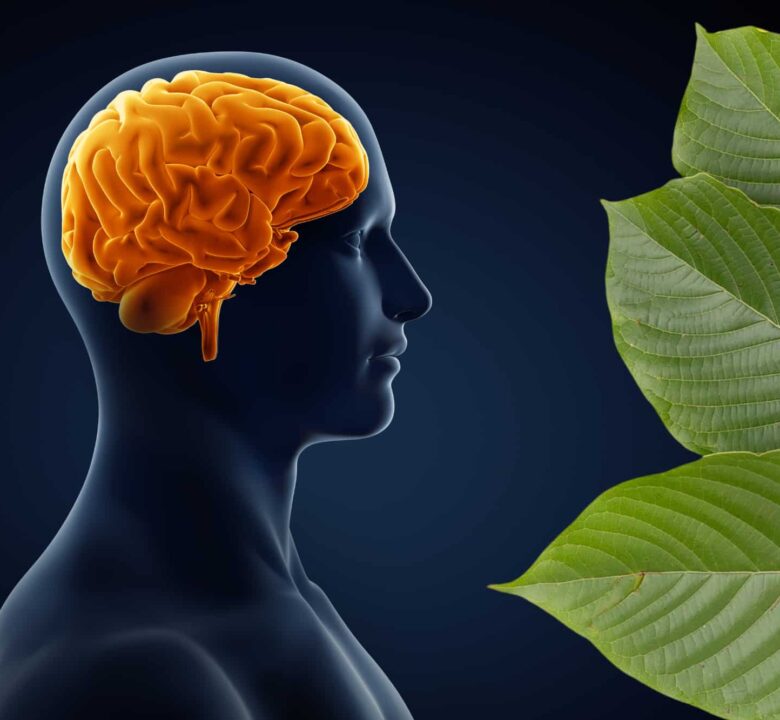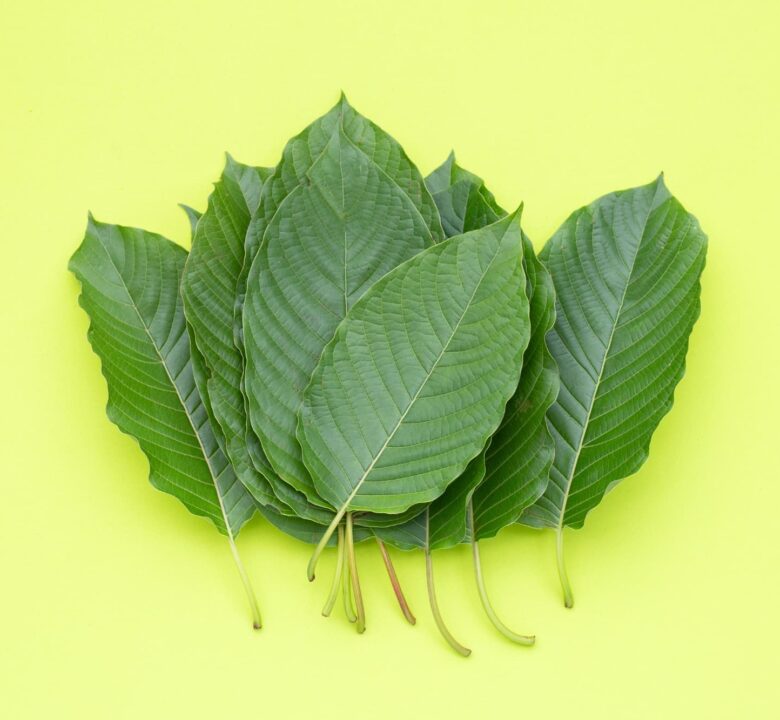
Kratom and Sweating: Understanding Physiological Responses to Kratom
July 4, 2024
Is Kratom Safe? Unpacking the Latest Research Insights
July 16, 2024Kratom (Mitragyna speciosa) is a tropical tree native to Southeast Asia, particularly Thailand, Malaysia, and Indonesia.
The leaves of the kratom plant have been used for centuries in traditional medicine to treat various ailments, including pain, anxiety, and fatigue. In recent years, kratom has emerged as a recreational substance due to its psychoactive effects.
To better understand the properties of this popular botanical, let’s explore the current research findings on kratom’s active compounds, mechanisms of action, and the potential for kratom to produce a “high” in users.

Kratom’s Active Compounds and Mechanisms of Action
Kratom contains several alkaloids, the primary active compounds responsible for its effects on the human body. The two most abundant and well-studied alkaloids in kratom are mitragynine and 7-hydroxymitragynine. These alkaloids interact with opioid receptors in the brain, particularly the mu and delta receptors, which are involved in pain regulation, reward, and addiction.
Research has shown that kratom’s effects are dose-dependent. At low doses (1-5 grams), kratom acts as a stimulant, increasing alertness, energy, and sociability. These effects are thought to be mediated by the interaction of mitragynine with adrenergic and serotonergic receptors in the brain.
At higher doses (5-15 grams), kratom produces opioid-like effects, including pain relief, euphoria, and sedation. These effects are primarily attributed to the action of 7-hydroxymitragynine, which has been shown to have a higher affinity for the mu-opioid receptor compared to mitragynine and even morphine.
Subjective Effects Reported by Kratom Users
Kratom users report a range of subjective effects that vary depending on the dose consumed. At low doses (1-5 grams), users commonly describe increased energy, alertness, and talkativeness.
These stimulant-like effects are often compared to those of caffeine or mild amphetamines. A survey of kratom users in the United States found that the most common reasons for using kratom were to increase energy and enhance focus.
At higher doses (5-15 grams), kratom users report effects similar to those of opioid drugs, such as euphoria, relaxation, and reduced pain perception. These effects are often described as a pleasant, calming “high” that can help alleviate anxiety and promote a sense of well-being. In the same survey, respondents also reported using kratom for pain relief and to manage opioid withdrawal symptoms.
However, some kratom users have reported adverse effects, particularly at high doses or with frequent use. These include nausea, constipation, dizziness, and confusion. In rare cases, users have reported experiencing hallucinations and delusions after consuming high doses of kratom.
These psychotic symptoms may be due to the interaction of kratom’s alkaloids with multiple receptor systems in the brain, including dopamine and serotonin receptors.
According to a kratom use study cited in an article in The Washington Post, “The most prominent theme (30.4%) was a sense of well-being that extended in degree to euphoria, especially at higher doses.”
In that same study, one user wrote that “kratom seems to create a pleasant, mellow and happy effect, like laying in a field of poppies.”
Another felt “body relaxation and mental calm with no loss of clarity.”It is important to note that the subjective effects of kratom can vary widely among individuals, depending on factors such as dosage, strain of kratom, and individual physiology. Additionally, the lack of regulation and quality control in the kratom market means that users may be exposed to adulterated or contaminated products, which can lead to unpredictable and potentially dangerous effects.

Comparison to Other Psychoactive Substances
The psychoactive effects of kratom, particularly at high doses, have been compared to those of opioid drugs like morphine and heroin.
The euphoria, sedation, and analgesia produced by high doses of kratom are thought to be mediated by the same opioid receptors that are activated by traditional opioid drugs. In fact, the main alkaloid in kratom, 7-hydroxymitragynine, has been shown to have a higher potency and efficacy at the mu-opioid receptor compared to morphine.
Due to its interaction with opioid receptors, kratom may have addictive potential similar to other opioid receptor agonists. In animal studies, mitragynine has been shown to induce reward-seeking behavior and tolerance, which are hallmarks of addiction. However, the addiction potential of kratom in humans is still not well understood, and more research is needed to determine the relative risk compared to other opioid drugs.
While kratom has been used for centuries in traditional medicine, there is a lack of rigorous scientific research on its safety profile compared to other psychoactive substances.
Most of the available information on kratom’s effects and risks comes from anecdotal reports, case studies, and surveys of users. In contrast, other psychoactive substances, such as prescription opioids and stimulants, have undergone extensive clinical trials to evaluate their safety and efficacy.
The lack of research on kratom’s safety is compounded by the fact that kratom is not regulated as a drug in most countries, including the United States. This means that kratom products can vary widely in terms of purity, potency, and contamination, making it difficult to assess the true risks and benefits of kratom use.
As a result, experts have called for more research on kratom’s pharmacology, toxicology, and abuse potential to inform public health policies and guide clinical decision-making.
Current research suggests that kratom can produce dose-dependent psychoactive effects, ranging from stimulant-like effects at low doses to opioid-like effects at high doses. The euphoria, relaxation, and pain relief reported by many kratom users are likely mediated by the plant’s main alkaloids, mitragynine and 7-hydroxymitragynine, which interact with opioid receptors in the brain.
However, the potential for kratom to cause addiction and other adverse effects remains a concern. While some studies have suggested that kratom may have a lower abuse potential compared to traditional opioids, more research is needed to fully characterize its addiction liability and long-term safety profile. The lack of regulation and quality control in the kratom market also makes it difficult to assess the risks associated with kratom use, as users may be exposed to adulterated or contaminated products.
Given the uncertainties surrounding kratom’s safety and the potential for serious adverse effects, it is advisable for individuals considering kratom use to consult with medical professionals. Healthcare providers can help assess the potential risks and benefits of kratom use on a case-by-case basis, taking into account an individual’s medical history, mental health status, and other relevant factors.
While kratom may produce psychoactive effects that some users find desirable, its use is not without risks. Until more research is conducted to fully understand kratom’s pharmacology, toxicology, and abuse potential, caution should be exercised when considering the use of this plant-based substance.
Open communication between patients and healthcare providers is essential to ensure informed decision-making and to minimize the potential harm associated with kratom use.
For Further Reading
- Benisek, Alexandra. “Health Benefits of Kratom.” WebMD. 1 Feb. 2023
- Coonan, Erin, et al. “Kratom: The safe legal high?” ScienceDirect.com. April 2021
- Fluyau, Dimy, et al. “Biochemical Benefits, Diagnosis, and Clinical Risks Evaluation of Kratom.” NIH.gov. 24 April 2017
- Grundmann, Oliver. “Patterns of Kratom use and health impact in the US-Results from an online survey.” NIH.gov. July 2017
- Ingraham, Christopher. “What it’s like to be high on kratom, according to the people who use it.” The Washington Post. 16 September, 2016
- Khor, Beng-Siang. “Mitragynine attenuates withdrawal syndrome in morphine-withdrawn zebrafish.” NIH.gov. December 2011
- Kruegel, Andrew et al. “Synthetic and Receptor Signaling Explorations of the Mitragyna Alkaloids: Mitragynine as an Atypical Molecular Framework for Opioid Receptor Modulators.” NIH.gov. 27 December 2016
- Suhaimi, Farah W. et al. “Neurobiology of Kratom and its main alkaloid mitragynine.” NIH.gov. Sep. 2016
- Singh, Darshan, et al. “Traditional and non-traditional uses of Mitragynine (Kratom): A survey of the literature.” NIH.gov. Sep. 2016




